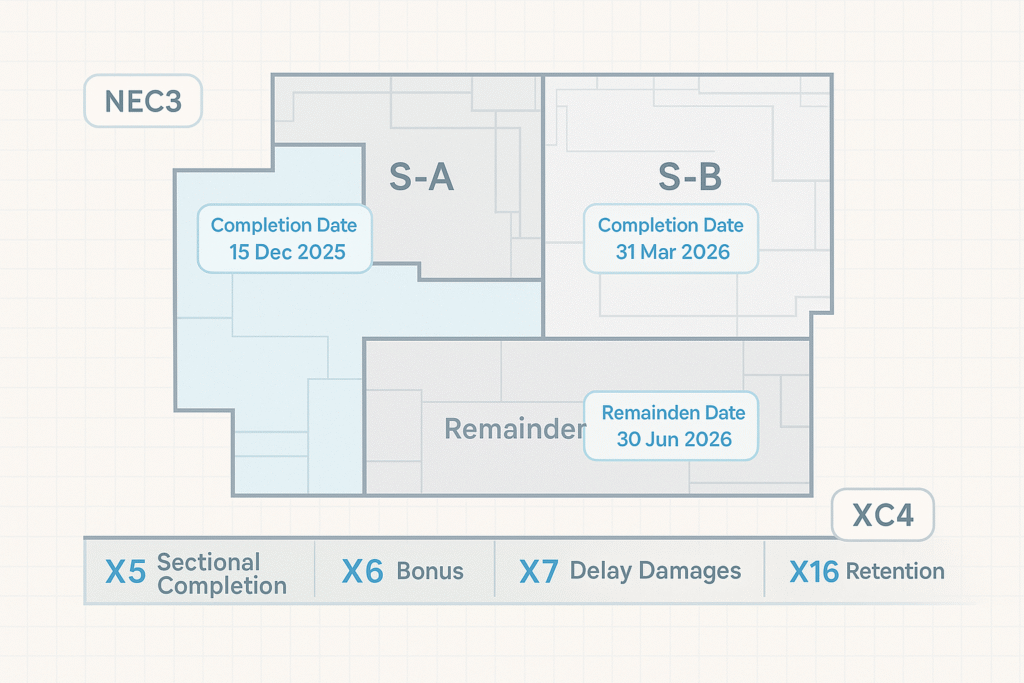Sectional Completion under NEC3 vs NEC4—X5 setup, X6 bonuses, X7 delay damages and X16 retention. Templates, Contract Data tables, Z-clauses and drafting tips.

Sectional Completion: NEC3 vs NEC4, X5, X6, X7 & X16
Sectional Completion under NEC3 vs NEC4—X5 setup, X6 bonuses, X7 delay damages and X16 retention. Templates, Contract Data tables, Z-clauses and drafting tips.